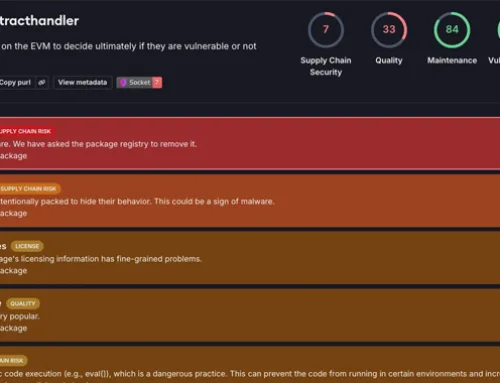India’s renewable energy growth in 2024
December 29, 2024
In 2024, India achieved significant milestones in renewable energy, adding 14.9 GW capacity (April-November) and reaching 205.5 GW total, including large hydro. Solar dominated with 94.2 GW, driven by expanded domestic manufacturing supported by the PLI scheme. The National Green Hydrogen Mission bolstered efforts in decarbonizing hard-to-abate sectors. Grid modernization, including UHV AC/DC lines and strict RPO enforcement, remains crucial. Key 2025 priorities include scaling solar, wind, energy storage, and green hydrogen while addressing infrastructure and financing gaps. With targeted policies and innovation, India is poised to lead the global clean energy transition and meet its 2030 goal of 500 GW.
The year 2024 was a milestone for India’s renewable energy sector, marked by record achievements and bold commitments. Between April and November alone, the nation added 14.9 GW of renewable energy capacity, excluding large hydro projects. This included 12,354 MW of solar, 2,071 MW of wind, 373 MW of biomass and bagasse-based power, and 81 MW of small hydro. As of November 30, 2024, India’s total renewable energy capacity reached 158.5 GW without large hydro and 205.5 GW when factoring it in. Solar remained the dominant contributor, accounting for 94.2 GW, followed by wind at 48 GW.
This progress reinforced India’s pledge to achieve 500 GW of renewable energy capacity by 2030. It also reflects the sector’s increasing reliance on hybrid systems, advancements in energy storage solutions, and greater private sector participation, which have collectively strengthened India’s leadership position in the global renewable energy landscape.
Solar Manufacturing
A major development was the expansion of domestic solar PV module manufacturing to 40 GW, propelled by the Production Linked Incentive (PLI) scheme. This not only met growing domestic demand but also laid the groundwork for potential exports, highlighting the importance of self-reliance. However, as the sector evolves, a broader roadmap for locally manufacturing other critical renewable components, such as glass, wind blades, transformers, HVDC, UHV AC components, and green hydrogen electrolyzers, is required.
Moreover, the government has made commendable progress with the PLI scheme and the Approved List of Module Manufacturers (ALMM) for solar modules and cells. To maintain this momentum, a strategy for manufacturing the full bill of materials for solar modules in India should be prioritized; while also avoiding disproportionate anti-dumping duties, especially as local supply still lags demand.
The Promise of Green Hydrogen
The National Green Hydrogen Mission, launched in 2023, has accelerated India’s transition to green energy, with a strong emphasis on unlocking export potential. Green hydrogen is positioned to play a key role in decarbonizing hard-to-abate sectors such as steel, cement, and heavy transport, further establishing India as a global hub for its production. In 2025, India has the opportunity to leverage its low-cost renewable energy resources to become a world leader in green hydrogen production. The National Green Hydrogen Mission, coupled with incentives for electrolyzer manufacturing, will drive investment and technological advancements in this space.
However, challenges persist, particularly in hydrogen production and the necessary infrastructure. The high upfront costs for hydrogen production and the infrastructure required for storage and transportation need to be addressed through targeted subsidies and R&D. Additionally, ensuring the cost competitiveness of green hydrogen with traditional fossil fuel alternatives is essential for widespread industry adoption. To realize this vision, continued policy support will be vital, including subsidies for production, infrastructure development, and the adoption of green ammonia and e-methanol in vehicles
Grid Modernization
Modernizing the grid remains a vital challenge. While initiatives such as “One Nation, One Grid, One Frequency” have strengthened connectivity and distribution across states, accelerating the construction of UHV AC and DC transmission lines through the ISTS network is crucial to evacuating 100 GW of power from renewable-rich zones like Rajasthan, Madhya Pradesh, and Gujarat to consumption centers. This must be prioritized over the next two years to address one of the sector’s most pressing issues i.e., ensuring timely access to the grid.
In addition, implementing Renewable Purchase Obligation (RPO) compliance regulations stringently and offering ISTS charge waivers to every distribution company (discom) that signs a Power Purchase Agreement (PPA) with Renewable Energy Independent Power Producers (REIA) before June 2025 will further stimulate growth and expedite renewable energy adoption across the country.
Outlook for 2025

Looking ahead to 2025, the renewable energy sector faces a mix of opportunities and challenges. Scaling capacity addition, particularly in solar and wind, integrating energy storage at scale, and expanding green hydrogen initiatives are key areas of focus. On the other hand, infrastructure gaps, delays in land acquisition, and the need for innovative financing mechanisms remain significant hurdles. Addressing these challenges through targeted policy measures such as strengthening PLI schemes, enforcing Renewable Purchase Obligations (RPOs), and providing grid access on time will be critical to sustaining the sector’s momentum.
With over 14.9 GW added in just eight months of 2024, India has demonstrated its ability to drive substantial growth. By embracing global collaboration, fostering innovation, and addressing infrastructure and financial gaps, the nation is positioned to lead the global clean energy transition and contribute meaningfully to combating climate change.
Disclaimer: The views expressed in this article are those of the author/authors and do not necessarily reflect the views of ET Edge Insights, its management, or its members
Search
RECENT PRESS RELEASES
Related Post




